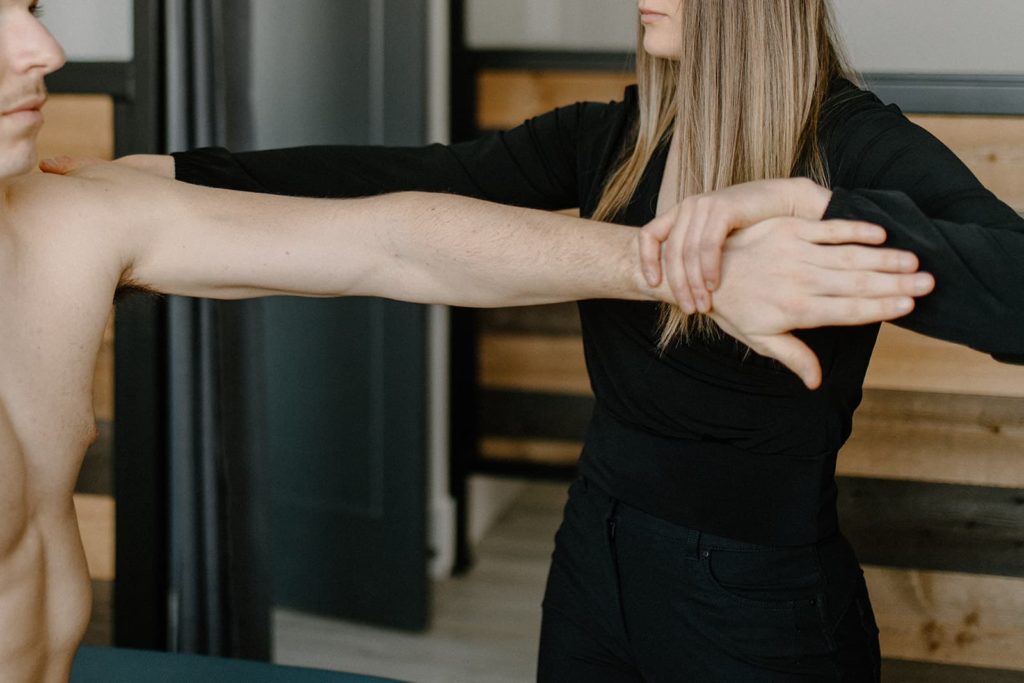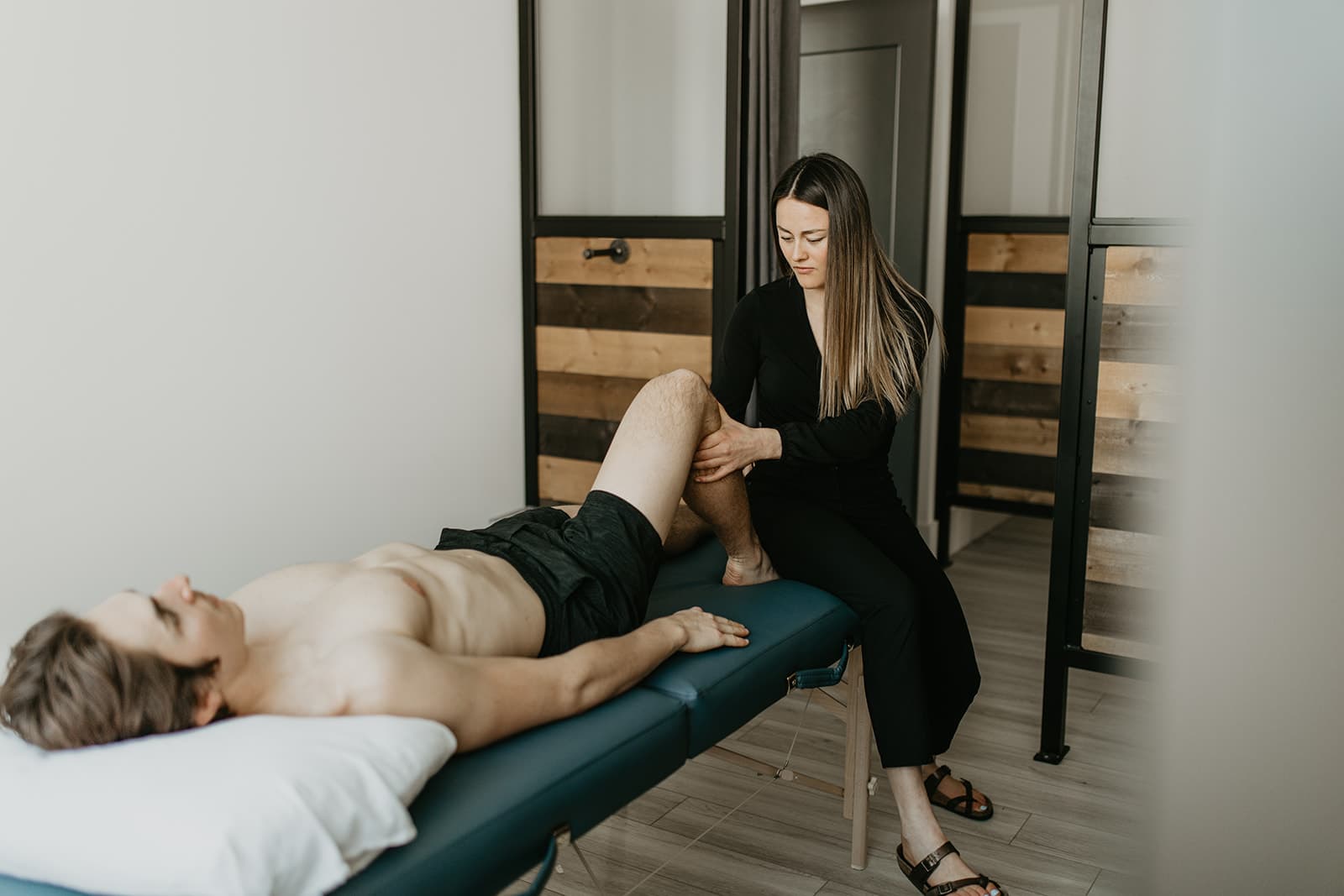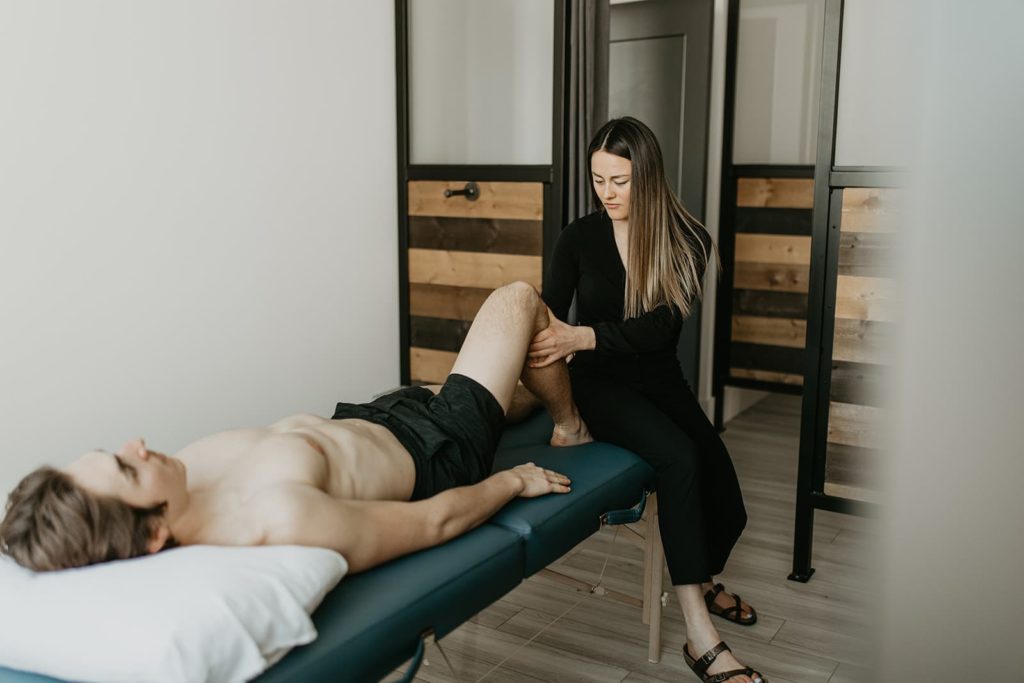Physiotherapy is used to treat many different types of pain-related issues. Whether you have suffered from an injury and are working on recovery or are taking preventive measures, there are 10 kinds of physiotherapy treatments you should know about that can help you with your health.
This blog will look at:
- Myofascial Release
- Biomechanical Analysis
- Joint Mobilization
- Stretching & Strengthening
- Exercise Prescription
- Range of Motion Assessment
- Hot & Cold Therapies
- Tens, Cupping, & NormaTec Compression
While many people think physiotherapy is only used as a method of recovery, there are many ways it can be used. Physiotherapy helps with movement, human function, and maximizing your physical potential.
Let’s look at some of the types of therapy offered at Recovery Lab.
Types of Physiotherapy at Recovery Lab
Physiotherapy is a one-on-one treatment personalized to your needs. Your physiotherapist may work with you in a variety of ways to help you reach your physical goals.
Myofascial Release
Myofascial tissue are the tough membranes that connect, wrap, and support your muscles. This form of therapy is a manual release which is mainly used in massage therapy. Myofascial treatment focuses on certain trigger points in your body which are stiff and within the myofascial tissue. Dysfunction in the myofascial tissue can refer pain in areas away from the adhered and tightened structures. Targeted myofascial release may help to release pressure and decrease pain in the compromised tissues.
Biomechanical Analysis
Biomechanical Analysis is used to help understand how your body moves in the ways that it does. Your patterns of movement are important to understand so your physiotherapist can diagnose where issues may stem from. Understanding which joints are moving and engaging during certain movements can help you strengthen areas of your body that may not be engaging to their full potential.
Your physiotherapist will make an effort to understand what your body can and cannot do, and create a plan to help you achieve lasting results.
Joint Mobilization
Joint mobilization helps many people regain their mobility after surgery or an injury. This form of treatment may help decrease pain and improve function. This technique is done by your physiotherapist, stabilizing one area of your joint and applying pressure to another area nearby.
The force applied can improve the overall function of the joint to help you gain a better range of motion.
Stretching & Strengthening
There are many ways in which you can strengthen different parts of your body. Stretching can help strengthen your muscles as long as it’s done properly. While many might believe that stretching should be done to warm up your muscles, it in fact should be done after your muscles have warmed up from other activities. Some of the ways stretching can help you include:
- Improving your flexibility
- Improving your performance in physical activities
- Helping with your range of motion
- Enabling your muscles to move more effectively
- Increasing blood flow

Exercise Prescription
Among other treatments, your physiotherapist can create a specific exercise prescription for you. This will be a custom plan that is designed with a designated outcome to help you reach your goals, whether it be recovery, strength-building, or preventive.
Range of Motion Assessment
It’s important to understand the limits of movement and what you are able to do without pain and restriction. When you get an assessment for your ROM, or range of motion, your physiotherapist will look at what your joint is capable of doing. This can help determine what kind of injury you may have sustained without causing further injury or strain to the area.
Hot & Cold Therapies
When you have aching pain in your joints and muscles, relief often comes in the form of hot and cold treatments. Different types of hot and cold treatments can involve:
- Heat from a hot water bottle or heating pad
- Cold water in a water bottle or frozen gel packs
- Being partially submerged in hot or cold water in a bath
These therapies will have different outcomes based on what they are being used for. Cold therapies are often used to reduce inflammation and slow down blood flow. These methods may reduce swelling or tissue damage.
Heat therapy is more commonly used for sore or tight muscles. Heat will increase blood flow and dilate the blood vessels. This can encourage more circulation and help the area to be treated faster.
Tens, Cupping, & NormaTec Compression
Compression and stimulation therapy can be helpful tools for relaxation. Many of us are busy in our day-to-day lives and do not get the rest that we need to help our bodies rejuvenate.
- NormaTec compression applies a graduated pulse technology to specific areas of the body. This can be done in the legs, hips, or arms to help increase blood flow.
- TENS (transcutaneous electrical nerve stimulation), is electrical stimulation that targets sensory nerves. This can aid in pain relief as it releases different chemical reactions in your body.
- Cupping is another ancient technique still used today to help with pain relief. The cups are another method of stimulating blood flow to areas of the body to help with pain relief.
Which Care and Treatment Options Are Right for Me?
There are many options for physiotherapy and it can be difficult to know which option is right for you without guidance. The professionals at the Recovery Lab are here to help you. Contact us today to speak to one of our experienced professionals to find out how physiotherapy could benefit you.



